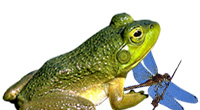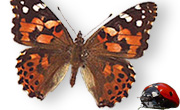Fax: (916) 381-4006



Live Plant Specimens |
 Plants are a major group of living things including familiar organisms such as trees, flowers, herbs, and ferns. About 350,000 species of plants have been estimated to exist. As of 2004, some 287,655 species had been identified, of which 258,650 are flowering. Plants are a major group of living things including familiar organisms such as trees, flowers, herbs, and ferns. About 350,000 species of plants have been estimated to exist. As of 2004, some 287,655 species had been identified, of which 258,650 are flowering.
Aristotle divided all living things between plants, which generally do not move or have sensory organs, and animals. In Linnaeus' system, these became the Kingdoms Vegetabilia (later Plantae) and Animalia. Since then, it has become clear that the Plantae as originally defined included several unrelated groups, and the fungi and several groups of algae were removed to new kingdoms. However, these are still often considered plants in many contexts. Indeed, any attempt to match "plant" with a single taxon is doomed to fail, because plant is a vaguely defined concept unrelated to the presumed phylogenic concepts on which modern taxonomy is based. Most familiar are the multicellular land plants, called embryophytes. They include the vascular plants, plants with full systems of leaves, stems, and roots. They also include a few of their close relatives, often called bryophytes, of which mosses and liverworts are the most common. All of these plants have eukaryotic cells with cell walls composed of cellulose, and most obtain their energy through photosynthesis, using light and carbon dioxide to synthesize food. About three hundred plant species do not photosynthesize but are parasites on other species of photosynthetic plants. Plants are distinguished from green algae, from which they evolved, by having specialized reproductive organs protected by non-reproductive tissues. Bryophytes first appeared during the early Palaeozoic. They can only survive where moisture is available for significant periods, although some species are desiccation tolerant. Most species of bryophyte remain small throughout their life-cycle. This involves an alternation between two generations: a haploid stage, called the gametophyte, and a diploid stage, called the sporophyte. The sporophyte is short-lived and remains dependent on its parent gametophyte. Vascular plants first appeared during the Silurian period, and by the Devonian had diversified and spread into many different land environments. They have a number of adaptations that allowed them to overcome the limitations of the bryophytes. These include a cuticle resistant to desiccation, and vascular tissues which transport water throughout the organism. In most the sporophyte acts as a separate individual, while the gametophyte remains small. For a great classroom aid, or a great source for study check out The PLANTS Database from the United States Department of Agriculture. The Plants Database provides standardized information about the vascular plants, mosses, liverworts, hornworts, and lichens of the U.S. and its territories. |
| Featured Items |
|---|
| Brassica Speed Seeds - 20... |

Brassica is a genus of plants in the mustard family (Brassicaceae). The members of the genus may be collect... |
|
Read more »»»
$38.00 (Buy Now) |
|---|
| Elodea (Anacharis) - Clas... |

Elodea is a genus of aquatic plants often called the Water weeds. Elodea is native to North America and it ... |
|
Read more »»»
$48.00 (Buy Now) |
|---|
| Marchantia - Class 60 |

Marchantia is a genus in family Marchantiaceae of order Marchantiales, a group of liverworts. These... |
|
Read more »»»
$22.00 (Buy Now) |
|---|
| Moss Mats - 4/pk |

4 pack is 4 - 1" squares, sold as a 4x4"piece. 3 pack is 3 - 4" squares. |
|
Read more »»»
$8.50 (Buy Now) |
|---|
9298 Elder Creek Road
Sacramento, CA 95829
(916) 386-2665
9298 Elder Creek Road
Sacramento, CA 95829
(916) 386-2665